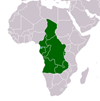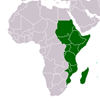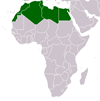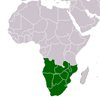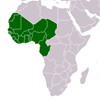Impacts of tramling and scallop dredging on bonthic habitats and communities
Impacts of tramling and scallop dredging on bonthic habitats and communities
Concerns about the impacts of trowed fishing gears such as trawls and dredges on benthic habitats and organisms have increased over the last two decades. The reasons for this concern are that bentic habitats provide refuge for juvenile fish, and the associated fauna comprise important food sources for demersal fish. Few general conclusions have bee drawn regarding benthic communities' responses to the impacts of trawling disturbances. This lack of knowledge is due to the complexity and natural variability of these communities, and to the fact that it is very difficult and demanding to conduct studies of them. This publication reviews the most recent experimental studies of the impacts of towed fishing gears (trawls and scallop dredges) on benthic communities. Generally, these studies include important caveats owing to limitations in the methodologies applied, and previous reviews have not taken these deficiencies into account. This review presents a critical evaluation of the methodological deficiencies of impacts studies, and so interprets the results from these studies with caution. Trawl impacts are investigated either by conducting experimental trawling and assessing the responses of the benthic community, or by using historical effort data and comparing fishing grounds that are subjected to low and high fishing intensities. The former approach provides exact date on the disturbance regime, but does not replicate real fisheries, whereas the latter method seldom provides suitable control sites. Ideally, the methodology applied in impact studies should have three important features: trawling disturbance at a spatial and temporal scale that is representative of commercial fishing; replicate control sites; and quantitative sampling. The most serious shortcoming in impact studies may be that of confounding effects because of a lack of replicate controls; Otter trawls, beam trawls and scallop dredges are likely to have different physical impacts on the sea bed owing to their different catching principles. The most noticeable physical effect of otter trawling is the furrows (up to 20 cm deep) created by the doors, whereas other parts of the trawls create only faint marks. Beam trawling and scallop dredging cause a flattering of irregular bottom topography by eliminating natural features such as ripples, bioturbation mounds and faunal tubes. The most serious biological impacts of otter trawling on hard bottom habitats that are dominated by large sessile fauna were demonstrated when erect organisms such as sponges and corals were shown to decrease considerably in abundance at the passing of the ground gear. Experimental trawling on sandy bottoms of high sea (offshore) fishing grounds caused declines in some taxa. However, such disturbances did not produce large changes in the benthic assemblages, and these habitats may be resistant to trawling owing to natural disturbances and large natural variability. Studies of the impacts of shrimp trawling on clayey-silt bottoms have not demonstrated clear and consistent effects, but potential changes may be masked by the more pronounced temporal variability in these habitats.
CITATION: Lokkerborg, Svoin. Impacts of tramling and scallop dredging on bonthic habitats and communities . Rome : FAO , 2005. - Available at: https://library.au.int/impacts-tramling-and-scallop-dredging-bonthic-habitats-and-communities-3

